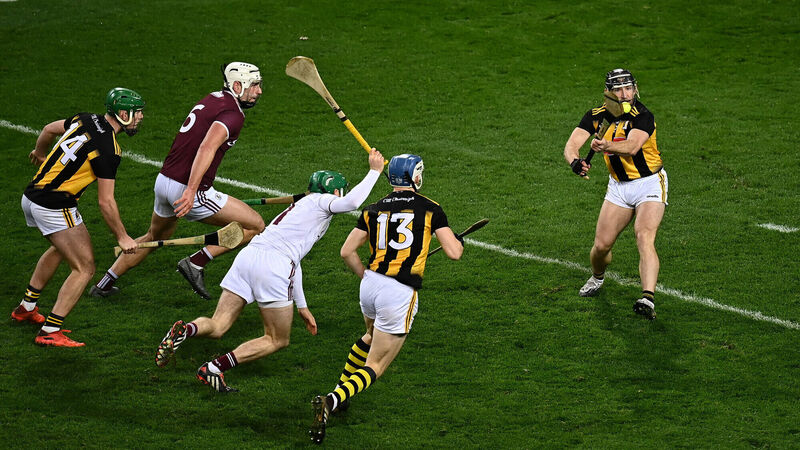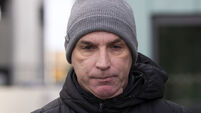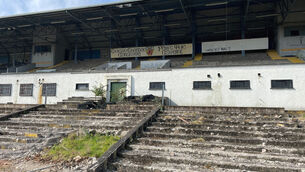Tommy Martin: Sporting artists like Richie Hogan allow us to say ‘I was here. I was alive’

Richie Hogan’s four touches in the 57th minute will be remembered long after the destiny of the 2020 Leinster hurling title is forgotten. Photo by Harry Murphy/Sportsfile
“The true artist,” George Bernard Shaw once wrote, “will let his wife starve, his children go barefoot, his mother drudge for a living at 70, sooner than work at anything but his art.”
I’m not sure whether this is true, but it does make artists sound appealingly gangsta. Pottering with paints or scribbling short stories in your spare time? An enthusiastic hobbyist you may be, but unless your mum is down a coalmine, an artist you are not.
Art is not to be dabbled with or tinkered on, the thinking goes. It unleashes itself into the world through the medium of the artist, who is so in thrall to its power that he or she cannot even make their better half a sandwich.
The author John Banville provided a variation on this theme earlier this year, as part of a piece in which a newspaper asked some writers to stroke their chins and say something profound about lockdown.
“Don’t get started on that book you always meant to write,” Banville advised. “Books that are any good are written out of irresistible compulsion, not the want of a pastime.”
The idea of art as an irresistible compulsion was everywhere last weekend.
For months we questioned elite sport in the time of Covid. Was it irresponsible? On a philosophical level, was sport without fans still sport? Was it a soulless husk, a dry exercise in contract fulfilment?
What about the integrity of competitions won in freakish circumstances?
We consoled ourselves that whatever it was would boost our flagging morale, like a hungry prisoner craving his morning gruel.
Then, at every turn last weekend, amid the wintry murk, came explosions of colour and creativity, great flowerings of joy pushing through the stony grey soil.
Tony Kelly’s performance for Clare, dazzling and prolific, like Mozart. Shane Walsh for Galway footballers, a pure showman with the poise and grace of a male lead at the Bolshoi.
England’s artful dodger Jack Grealish, flicking the ball over the head of Thomas Meunier with the back of his heel, leaving the Belgian defender hacking at thin air like the bad guy in a Jackie Chan movie.
And then there was Richie Hogan.
Hogan’s goal turned the tide in a Leinster final that was slipping beyond Kilkenny. Certainly, the Galway defence were still scratching their heads moments later when his fellow black-and-amber wizard TJ Reid struck for a second and ultimately decisive goal.
But Hogan’s four touches in the 57th minute will be remembered long after the destiny of the 2020 Leinster hurling title is forgotten. Indeed, the goal may well be remembered long after most of the details of this strange season have slipped from memory.
Art and sport are both ways for the human to mark their tiny flicker in the yawning infinity of time and say “I was here! I was alive! And this is who I was!”
Richie Hogan’s goal will belong to posterity longer than it belongs to the 2020 championship and it flew past goalkeeper Éanna Murphy by the force of that irresistible compulsion.
It was not only Henry Shefflin in the ‘Sunday Game’ studio who likened Hogan’s goal to Arsenal striker Dennis Bergkamp’s famous pirouette against Newcastle United in 2002. Both goals were utterly unique and both required repeated viewings to figure out exactly what had happened.
When Bergkamp is asked about his goal, he breaks it down into its component parts. The pass from Robert Pires, a little behind where he wanted it. The improvised sidespin touch to put it beyond Nicos Dabizas. The turn and dart in the opposite direction around the other side of the defender, simply “the quickest way to get to the ball.” The cool, precise finish of the only person, in the stadium or beyond, who fully grasped what was going on.
When people say he didn’t mean the goal, Bergkamp’s response, according to his biographer David Winner, is “Which part do they think I didn’t mean?” Hogan’s goal is similarly comprised of distinct parts, each action a selection from the palette of genius, each unimaginable to the rest of us. As with Bergkamp’s goal, the TV commentators are at a loss to describe what they are looking at, as if standing in front of a Jackson Pollock.
But you can imagine Hogan remembering it as Bergkamp does, a series of instinctive brush strokes from a picture only his mind can see.
Bergkamp tells Winner about his childhood spent kicking a ball against a wall outside his home in the outskirts of Amsterdam, “seeing how it bounces, how it comes back, just controlling it…Left foot, right foot, making the ball spin. Again and again. It was just fun. I was enjoying it. It interested me.”
You can imagine Hogan doing similar off the gable end in Danesfort, seeing the world in a ball, shaping that world with every flick, strike and spin.
This is where the irresistible compulsion comes from. I’m alive, I’m here, this is who I am. Watching Hogan and the other virtuosos in action last weekend was to make you feel something, the basic requirement of art and something we are rather in need of at the moment. If that’s all that sport is for now, art for art’s sake, then that’s enough.
Hogan has battled back from terrible injury problems and the disappointment of a red card in last year’s All-Ireland final. At one stage, back in 2017, he gave up his teaching job to allow him focus totally on hurling.
“For me, it’s not even about money at all,” he told GAA.ie. “There’s some people who need money to live that lifestyle and focus on their career…but it’s just not that important to me. I remember saying to one of these life coaches, ‘If I play to the age of 35 and get absolutely everything out of myself I will gladly sweep the streets for the next 50 years.’ It wouldn’t bother me in the slightest.”
Shaw would approve.







